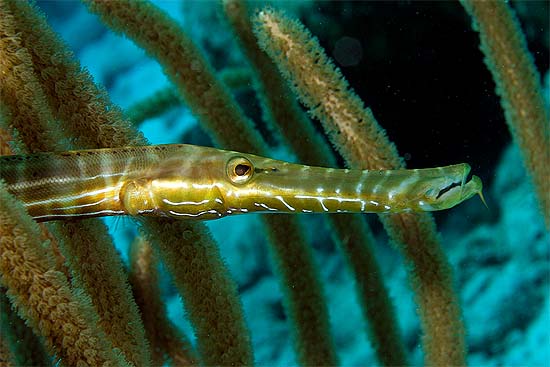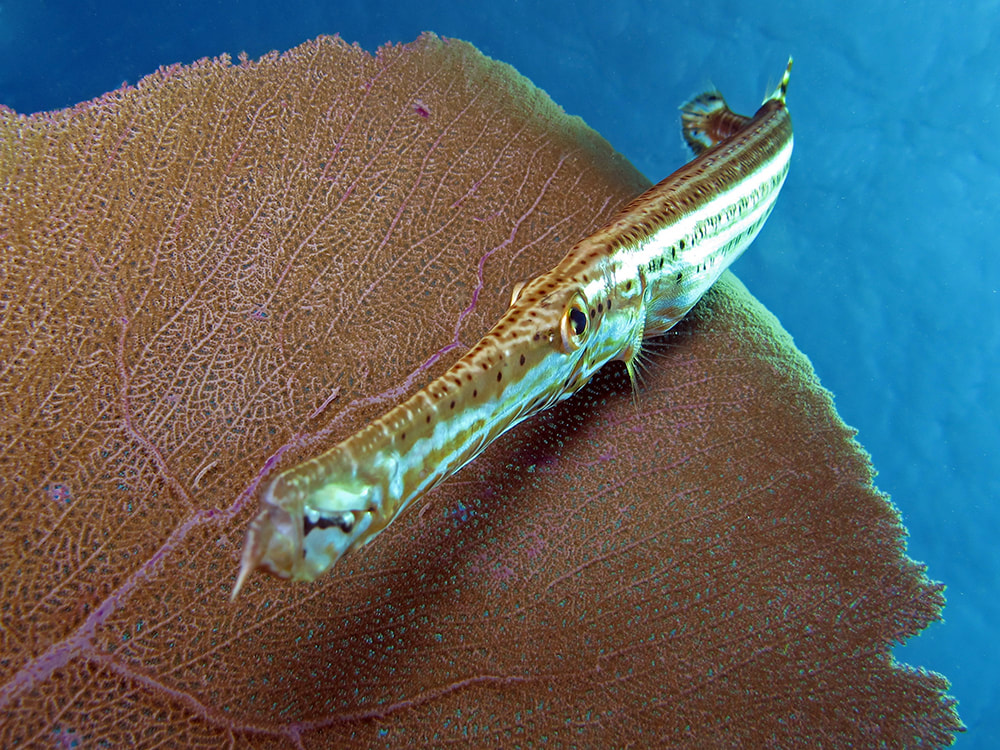Trumpet Fish – The Master of Camouflage and Ambush
The trumpet fish, scientifically known as Aulostomus maculatus, is a fascinating marine creature that belongs to the family Aulostomidae. This slender, elongated fish is renowned for its incredible camouflage abilities and its unique hunting strategy. In this article, we will delve into the world of trumpet fish, exploring their physical characteristics, behavior, habitat, and their vital role in the marine ecosystem.
Trumpet fish are instantly recognizable by their long, tubular bodies, which resemble the shape of a trumpet or a pipe, hence their name. They can grow to various lengths, ranging from a mere 30 centimeters (12 inches) to over a meter (3 feet) in some species. Their elongated bodies are usually brown, green, or yellowish in color, often featuring mottled patterns that help them blend seamlessly with their surroundings.
One of the most remarkable aspects of trumpet fish behavior is their remarkable ability to blend in with their environment. They achieve this by imitating the swaying movements of nearby coral or other aquatic vegetation. This mimicry allows them to avoid detection by both prey and predators.
Trumpet fish are primarily carnivorous and feed on a diet of small fish and crustaceans. Their hunting strategy is equally intriguing. They are ambush predators, relying on their stealth and camouflage to get close to their prey. Once in striking distance, they extend their tubular mouths with lightning speed, creating a vacuum that sucks in their unsuspecting prey. This suction-feeding method is highly effective and allows trumpet fish to capture prey larger than their own size.
Trumpet fish are primarily found in tropical and subtropical oceans around the world. They are commonly spotted in coral reefs, seagrass beds, and other shallow coastal environments. These habitats provide ample opportunities for camouflage and ambush, which align with their hunting strategy.
Trumpet fish are known to be solitary creatures, often seen swimming alone or in pairs. They tend to prefer a solitary lifestyle, as it allows them to be more effective hunters and remain hidden from potential predators.
Trumpet fish play a crucial role in maintaining the balance of marine ecosystems. As predators of small fish and crustaceans, they help control the population of these prey species, preventing overpopulation. Additionally, their camouflage abilities help them avoid predation, which, in turn, aids in regulating their own population.
While trumpet fish are not targeted by commercial fisheries on a large scale, they may face indirect threats from habitat destruction and pollution. As with many marine species, the health of their ecosystems is vital for their survival.
The trumpet fish is a mesmerizing creature of the ocean, showcasing the wonders of evolution and adaptation. Their ability to mimic their surroundings and employ a unique hunting strategy makes them a fascinating subject of study for marine biologists and enthusiasts alike. By understanding and appreciating the trumpet fish and its role in the marine ecosystem, we can contribute to the conservation of these remarkable creatures and the preservation of their habitats.
Hits: 5








